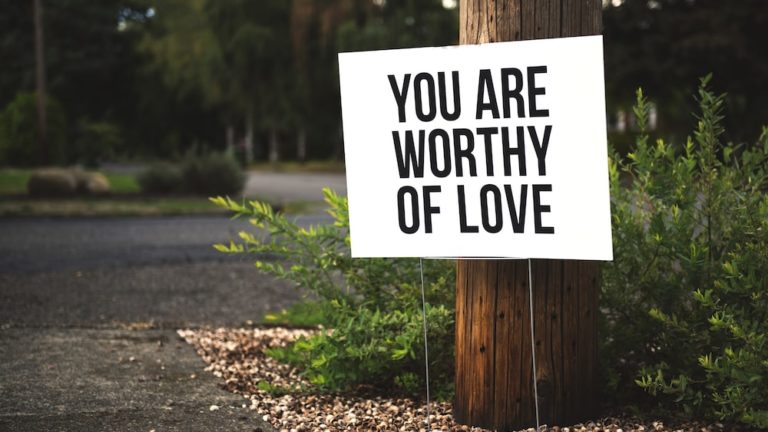Blaming Vs Fault: Understanding The Key Differences
Welcome, folks! Ever found yourself locked in a self-inflicted blame hurricane, pointing fingers left and right, feeling like a tennis player who never wins a single serve? Blaming versus fault – a familiar tango we often dance, without fully understanding the intricate steps. In our quest for self-improvement, these concepts hold enormous significance.
Here, in this sanctuary of personal growth, we pull back the velvet curtain on the semantics of blame and fault. We’ll delve deep into their definitions, the psychological aspects and social implications they carry, their impact on personal and professional landscapes, and their broader role in the tapestry of society. We will also provide strategies to facilitate that seismic shift from blaming to accepting fault. Reach for that muffler; it’s going to be a thrilling ride!
Understanding Blaming and Fault
Before we march into the terrain of blaming vs fault, let’s lay down some solid groundwork. To know their differences, let’s understand them individually first. Get those thinking caps on folks, we’re just getting started!
Defining Blaming
Blaming, where do we start? It’s like going on a scenic hike only to realize you’ve circled back to where you started; doesn’t help, does it? In essence, blaming is the act of attributing something undesirable or wrong to someone else. It’s the “He did it!” knee-jerker we learned in our terrible twos. And boy, do we master this craft with flying colors!
Blaming, as a verb, often becomes a psychological crutch, a diversionary tactic we employ to unburden ourselves of responsibility. It’s like passing a flaming hot potato, isn’t it? Just remember, while this potato may feel scorching at that moment, its heat also serves to cook it. Chew on that!
Blaming is the act of attributing something undesirable or wrong to someone else, a diversionary tactic we use to unburden ourselves of responsibility, but it ultimately hinders our personal growth.
Defining Fault
In contrast, ‘fault’ tends to play the quieter, more contemplative cousin. Oh, don’t underestimate it! A failed prank, a dropped catch, a recipe gone awry; fault stands up, holds its hand high, and takes responsibility. Essentially, it’s the acceptance that we played a role, albeit unintentionally, in a negative outcome, like a chess player admitting a wrong move.

Fault, my dear comrades, is wrapped in humility. It’s a stepping-stone, paving the road to self-improvement, armed with powerful lessons learned. Fault is a bit like the kid who tripped while racing, got muddy, but hopped back up grinning, knowing he’s learned to watch his step next time.
Fault also has a more formal connotation in legal and moral contexts. In these scenarios, it refers to the person or party who caused harm due to a lapse in judgment or duty: the driver who skipped the red light or the company that didn’t adhere to safety standards. There’s a world to fault, but let’s stick to our playground for now!
The Differences Between Blaming and Fault
As we see, both blaming and fault trace their roots to a negative outcome. Yet, they are as distinct as chalk and cheese. Time for us to explore these differences, both glaring and subtle.
Psychological Aspects
Psychologically, blaming and fault straddle different ends of the spectrum. Blaming is often a deflection, a reflex action like swatting away an annoying fly. It’s a defense mechanism we’re inherently wired for, a way to protect our self-esteem from a perceived threat. That’s where the comfort ends, though!
Blaming consistently snags on a web of negativity and resentment. It’s like being on a sinking raft while cutting away your life jackets, one by one. Moreover, studies indicate that a habit of blaming can lead to increased stress, decreased self-esteem, and can even hamper our ability to empathize. Quite a hot potato, right?
Contrarily, accepting fault is a constructive act. Yes, it’s uncomfortable, akin to wearing one size smaller shoes. Yet, it paves a clear path to rectification and growth. By recognizing our faults, we develop areas for self-improvement. It’s like cleaning your spectacles; suddenly, everything seems so much clearer!
Social Implications
The social repercussions of blaming and fault are like ripples in a pond. A perpetual blame game can breed a toxic atmosphere, whether in personal relationships, professional environments, or larger societal structures. It’s like cooking a meal everyone’s forced to eat but nobody enjoys.
On the other hand, shouldering your fair share of fault promotes trust, respect, and cooperation in social relationships. It’s equivalent to being the person who messes up the camping tent but is the first to laugh, accept the error, and fix it. Instant camaraderie, right there!
Shouldering your fair share of fault promotes trust, respect, and cooperation in social relationships.
The Impact of Blaming vs Fault in Personal Relationships
Just like how we carefully select the ingredients for our favorite recipes, the mixture of blaming and fault can determine whether our personal relationships sizzle or fizzle. Let’s uncover how!
How Blaming Affects Relationships
Ever been swept up in a never-ending blame storm in a relationship? It’s like a tennis match with insults flying instead of balls. Blaming can significantly strain interpersonal dynamics, creating a hostile environment that’s about as welcoming as a prickly cactus.
Frequent bouts of blaming can hinder communication, further aggravating misunderstandings. It’s similar to both people shouting into a tunnel at the same time; each hears only his own voice amplified. Now that’s some food for thought!
The Role of Fault in Conflicts
Ah, the intricacies of conflict! Let’s dive nose-first (hope there’s no glass door) into understanding the role of fault in this teeming ocean of misunderstandings and hard feelings. You see, acknowledging fault can be akin to the painful yet relieving act of pulling off a band-aid. It can momentarily sting, but it tends to promote healing and breeds a sense of introspective growth.
Fault, in essence, is the responsibility borne for a particular problem or misstep. In the thick of any conflict, recognizing our own faults is like spotting a needle in a haystack while wearing rose-tinted glasses. Not the easiest, I admit. Yet, it’s this very recognition of fault that could potentially turn bickering sessions into constructive dialogues. It promotes empathy, understanding, and forgiveness, thereby fostering resolution.
Identifying and admitting our fault in a situation helps us remove the hefty (often ego-filled) armor we wear, exposing our vulnerable, human side. Surprisingly enough, this can lead to significant peaks in our emotional intelligence journey. If there were a guide map to successful relationships (professional or personal), admitting fault would undoubtedly carry bold, underlined importance. Yes, fellow journeyers, admitting fault is quite the game changer in the realm of conflict resolution.
Blaming vs Fault in Professional Settings
Welcome to the grind, my coffee-loving comrades! In the professional world, the concept of blaming vs fault takes on a whole new dimension. We’ll explore the role of each in professional settings, where the stakes may seem more prominent, and the outcomes potentially career-altering.
The Toxicity of Blame Culture
Blame culture, my friends, is as harmful as consuming a cup of coffee that’s been left out for three days (and I can attest to that, unfortunately!). In professional settings, a blame culture fosters a fear-driven environment where individuals are more focused on pointing fingers rather than solutions. It’s akin to a horde of meerkats who, instead of working together to fend off predators, are too busy blaming each other when a mongoose wanders too close.

This toxicity results in a stifling atmosphere where learning from mistakes gets tossed right out the window. Remember, the flour of progress is kneaded with the water of mistakes and failure. But in a blame culture, it’s as if the water supply has sadly run dry. Workplaces dominated by this type of culture often suffer from diminished productivity, low morale, and high turnover- the antithesis of constructive growth.
Accepting Fault in a Professional Environment
Like using a broom to beat a rug (yes, guilty), admitting fault in a professional environment can have a cleansing effect, clearing away the dust of misconceptions and misunderstandings. Acknowledging our missteps in the workplace paves the way for transformative growth.
Interestingly, people fail to recognize that accepting fault can be a sign of strength and integrity. It’s like flexing your abs at the gym- you’re showing off your strength, not displaying weakness.
Admitting fault also contributes to creating a forgiving culture, where mistakes are taken as learning opportunities, not punishable offenses. When mistakes are considered stepping stones to success, the work environment evolves into a temple of learning, fostering mentorship, collaboration, and innovation. Sounds like a place we’d all like to work in, doesn’t it?
The Role of Blaming and Fault in Society
Now, let’s turn our gaze at the larger portrait- society. It’s a vast canvas, with strokes of blame and fault crisscrossing across individual experiences and social structures. It’s incredible how, at a societal level, blaming vs fault manifest themselves in profound and sometimes distressing ways.
Victim Blaming Phenomenon
Unfortunately, victim blaming is like that stubborn ink stain that continues to mark the fabric of our society. Victim blaming chemically bonds with misfortune, causing the victim to face double the hardship- the misfortune itself and the blame accompanying it.
This phenomenon can foster a culture of silence and inaction. Victims might feel disinclined to speak about their experiences for fear of being blamed, while bystanders might hesitate to intervene due to societal norms. It’s as if everyone is trapped in a twisted blame game, with no one stepping forward to reset the board.
Victim blaming perpetuates a culture of silence and inaction, discouraging victims from speaking out and bystanders from intervening.
The Concept of Fault in Legal Systems
Dipping our quills into the inkwell of legal systems, the concept of fault serves as the foundation upon which justice balances itself. Like a carpenter using a level to ensure the straightness of a beam, legal systems employ fault as a gauge of accountability.
Fault, in this context, is akin to the invisible fingerprint left at a scene. It enables the law to identify the responsible party and administer proportionate consequences. However, the concept of fault in legal systems isn’t always a black-and-white scenario. It’s often smudged with shades of gray, making it a complex but crucial aspect of ensuring justice.
Consider, for instance, the idea of “contributory negligence” in tort law. It admits that fault could be shared, indicating that the legal definitions of fault are elastic enough to account for real-life complexities which, let’s admit, rarely arrive in neat packages.
Strategies to Shift from Blaming to Accepting Fault
Finally, let’s roll up our sleeves and delve into the toolbox, unearthing strategies to shift from blaming to accepting fault. It’s a crucial switch that has a transformative effect not only on our personal and professional lives but also influences societal norms. Brace yourself, it’s gonna be quite a repair!
Steps to Stop Playing the Blame Game
Are you tired of spiraling down the rabbit hole of blame? You’re not alone. Many of us find ourselves in similar predicaments. Grit your teeth, here are some steps you might want to consider. First and foremost, recognize your knee-jerk response to blame others. Understanding your instinctual responses provides profitable ground for growth. Sure, it has all the comfort of a bath in a prickly pear cactus field. Nevertheless, discomfort precedes improvement.
Next, cultivate self-awareness. Just as a chameleon adjusts its color to its surroundings, adapt your perspective to the situation. Identify your part in the dynamics and, most importantly, be really honest with yourself. Indeed, it’s like taking a hard look in the mirror after a wild night out. Oh, the horror!
Techniques for Accepting Fault and Promoting Responsibility
Shifting the gear from blaming to accepting fault might feel like taming an overcaffeinated squirrel. Yet, it’s essentially simple – start by taking responsibility for your actions. Keep in mind, a good captain doesn’t blame the sea. Just like the intermittent Wi-Fi connection at your favorite café, blame is a pesky trespasser, an unwelcoming guest. Instead, approach every obstacle with curiosity. Seek to learn from your experiences rather than blaming others.
Another technique involves practicing empathy. Imagine the situation from the other person’s perspective. This might feel like rummaging through someone else’s suitcase – it’s messy, weird, but strangely enlightening. By building bridges instead of walls with empathy, you promote responsibility and foster healthy relationships.
Take responsibility for your actions and approach obstacles with curiosity, practicing empathy to build bridges and foster healthy relationships.
FAQs
1. What are the psychological effects of blaming vs accepting fault?
Psychologically, blaming often leads to an increased level of stress, decreased self-esteem, and stunted growth. Contrarily, accepting fault promotes self-awareness and personal growth. By acknowledging our role in any given situation, we’re better equipped to learn, adapt, and ultimately forge stronger relationships.

2. How does blame culture impact a professional environment?
In workplaces, blame culture can induce a crippling environment. Teams become stifled, innovation dissipates, and collaboration crumbles like a biscuit in hot tea. Conversely, encouraging responsibility helps foster trust, promotes open communication and enriches the moral fabric of the organization.
3. What role does victim blaming play in society?
The prevalence of victim-blaming in society contributes to a culture of silence and further perpetuates harmful cycles of behavioral norms. It tends to suppress voices, causing victims to retreat further into the caverns of their torment, making the shedding light on their grievances all the more challenging.
4. How can one shift from a mindset of blaming to accepting fault?
Shifting towards accepting fault requires a good dose of self-awareness and empathy. By acknowledging our contribution to any situation and empathizing with others, we begin the shift away from blame, setting sail towards a land overflowing with the fruit of responsibility.
Conclusion
Okay, let’s put a bow on this. The dark labyrinth of blaming vs fault is rife with twisty passages and confusing signposts. Blame is all too often a convenient scapegoat for our mishaps and blunders. On the other hand, accepting fault, though a tango with discomfort, paves the road to self-enhancement and interpersonal harmony.
To master the dance, principled techniques are paramount. Recognizing when we’re quick to blame, cultivating self-awareness, taking responsibility, and brandishing the mighty shield of empathy, are all vital strategies in this quest. Remember, every journey of self-improvement begins with a willingness for introspection and brave acceptance of our human imperfections.
So next time you find yourself playing the age-old blame game, take a step back, draw a deep breath, and ask: what part did I play in this? Growth is not a sprint. It’s a marathon, and you’ve got plenty of running shoes. Keep growing, staying curious, and remember, it’s okay to laugh at ourselves along the way.
Keep growing, dear friend. Stay curious. Remember, we’re all a beautifully chaotic, jumbled mess. We’re learning. We’re evolving. We’re in this together. Until next time. Signing off, Fabian.
Share with your Friends:






